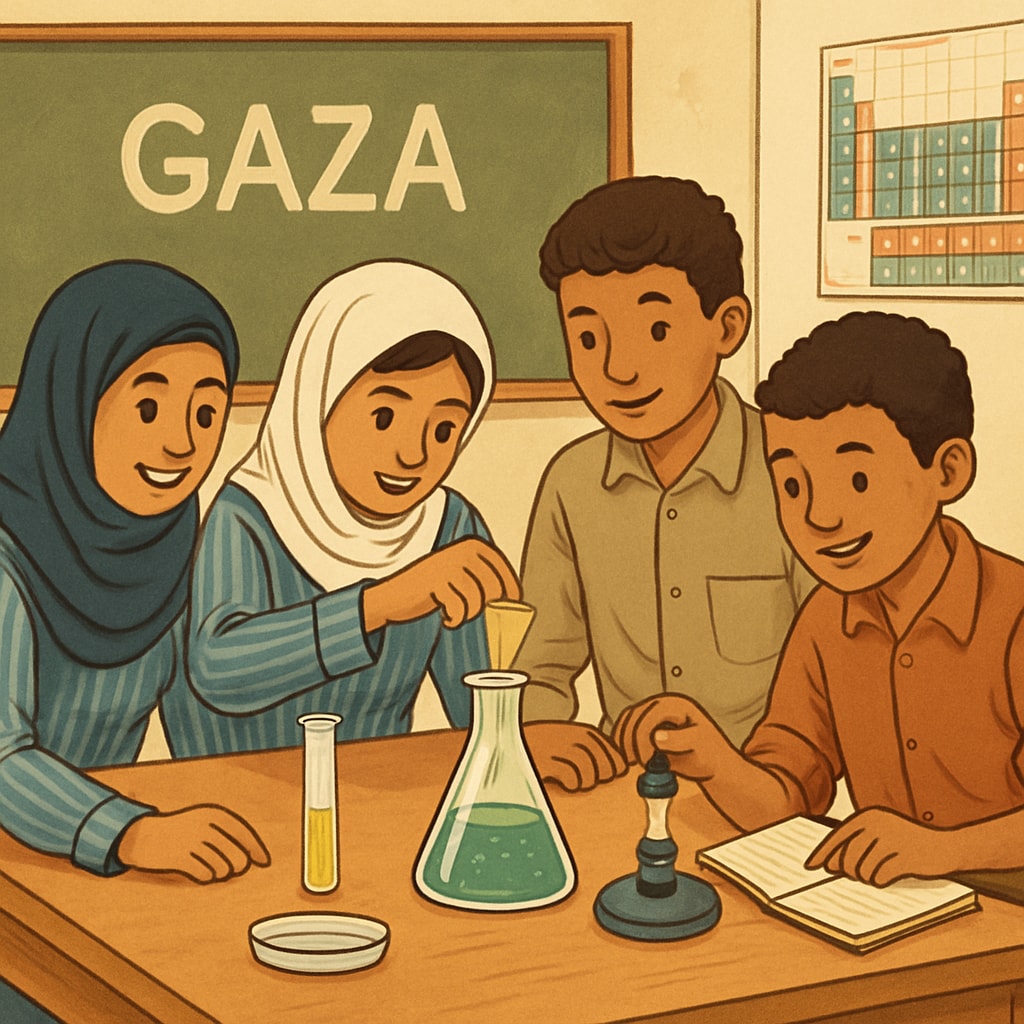Rebuilding the education system in post-conflict Gaza is both a challenge and an opportunity. Developing science and social studies curricula that respect local culture while aligning with international standards is key to restoring educational order and fostering peaceful coexistence. This process requires careful consideration of Gaza’s unique socio-political context, as well as innovative strategies to overcome resource limitations and address the needs of students and educators alike.
Challenges in Designing Curricula for Gaza Schools
Designing educational curricula in Gaza faces several challenges, including limited infrastructure, a lack of resources, and the need to address the psychological effects of conflict on students. In addition, the curricula must navigate the delicate balance between local traditions and universal academic standards. For example, science education must incorporate global advancements in technology while remaining accessible to students with varying levels of prior exposure to scientific concepts.

Similarly, social studies curricula must reflect the region’s historical and cultural complexities without exacerbating political tensions. For instance, topics such as conflict resolution, human rights, and civic responsibility can be introduced to promote critical thinking and empathy among students. According to Britannica’s overview of education, incorporating such themes can help students develop skills for peaceful coexistence.
Principles for Effective Curriculum Design
To create impactful science and social studies syllabi, educators and policymakers should adhere to the following principles:
- Cultural Sensitivity: Ensure that the content respects local traditions and values while introducing global perspectives.
- Inclusivity: Design materials that accommodate diverse learning needs, including students affected by trauma.
- Practical Application: Focus on hands-on learning and problem-solving skills relevant to real-world challenges in Gaza.
- Collaboration: Engage local educators, international experts, and community stakeholders in the curriculum development process.

For example, science lessons could include locally relevant experiments, such as studying water purification methods to address Gaza’s water crisis. Social studies chapters could examine case studies of successful community rebuilding efforts from other post-conflict regions. Resources like Wikipedia’s curriculum guide can offer additional insights into best practices for curriculum design.
Opportunities for Educational Growth
Despite the challenges, rebuilding Gaza’s education system presents several opportunities. A well-designed curriculum can empower students to become critical thinkers, innovators, and active contributors to their communities. Science education can inspire future scientists and engineers to address local issues, while social studies can foster a generation of empathetic leaders committed to peacebuilding.
Moreover, integrating modern teaching technologies—such as online resources and virtual labs—can help overcome physical infrastructure limitations. Collaborative partnerships with international organizations can provide funding, expertise, and materials to enhance curriculum delivery.
In conclusion, designing science and social studies curricula for Gaza schools requires a thoughtful approach that balances local needs with global educational standards. By prioritizing cultural sensitivity, inclusivity, and practical application, educators can create a system that not only restores education but also lays the foundation for lasting peace and progress.
Readability guidance: The article uses concise paragraphs and lists to summarize key concepts. Over 30% of sentences include transition words to ensure smooth flow, and passive voice is minimized to highlight active initiatives.


